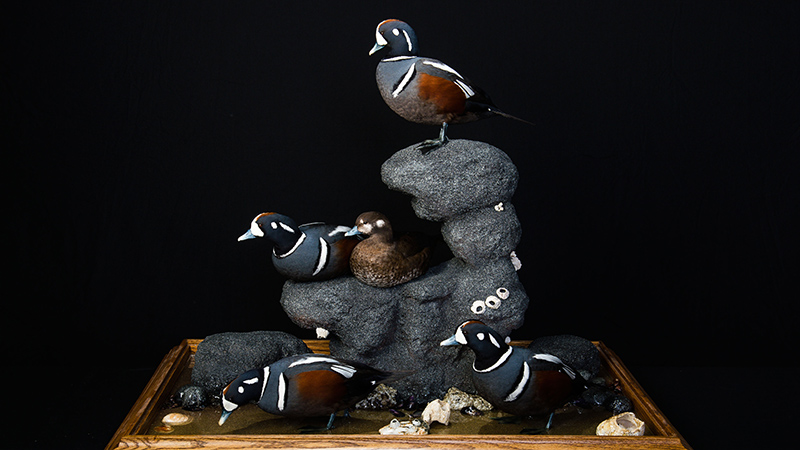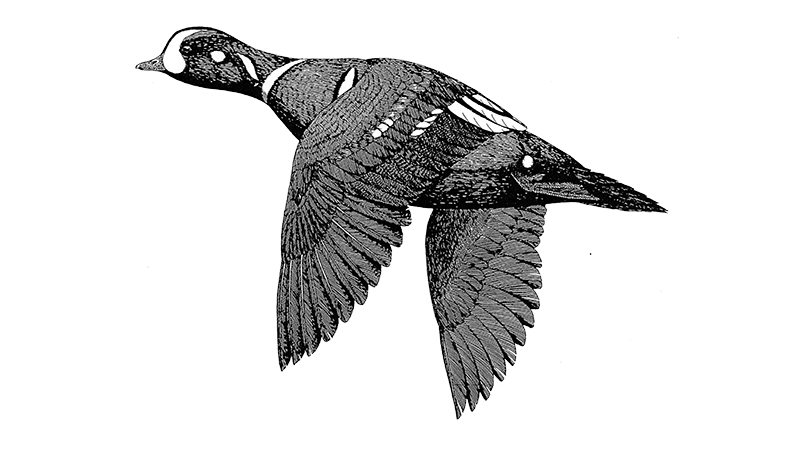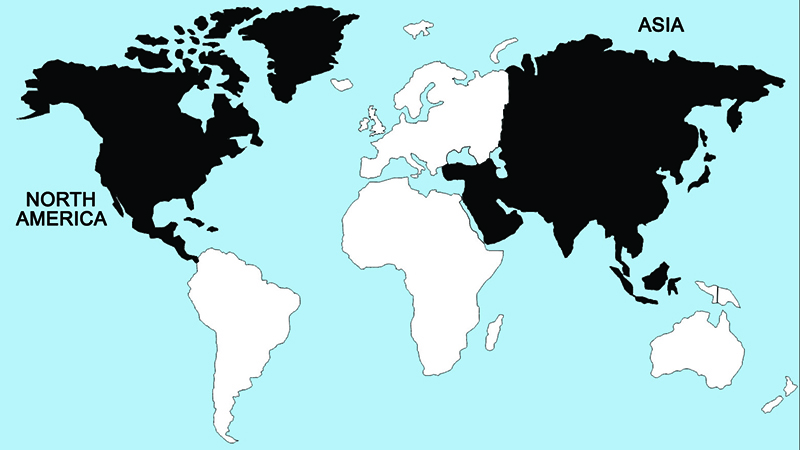Harlequin Duck

The harlequin duck might well be regarded as the most beautiful of North American waterfowl, at least by those persons who are not overwhelmed by the iridescent magnificence of the American wood duck. The harlequin has a more subdued beauty, with only a slight bluish iridescence, mainly on the secondaries. Its elegant combination of indigo, black, white, and chestnut is organized in a complicated "harlequin" pattern. The female is mostly dark brown, with white patches around the ears and on the front of the face. This duck seems to be completely at home either in the fast white-water of mountain streams or among crashing coastal breakers, where it feeds on the invertebrates associated with the rocky bottoms of these habitats. It flies infrequently, and in spite of the bright coloration of the male, it is often very hard to locate in its blue-water, white-foam surroundings.
Harlequin ducks are difficult to study in the wild, and even today little is known of their breeding biology. The males certainly do not participate in brood care, and territoriality is evidently weak or even absent; a surprising situation considering that many stream-dwelling ducks are highly territorial. The females nest in extremely well hidden sites, either on the ground, usually under dense vegetation, or in rocky crevices or other natural cavities. Their eggs reportedly hatch after about 27–29 days, but the fledging period is somewhat uncertain, with estimates ranging between 42 and more than 60 days.

Regions Birds Are Found

Collection Location & Year
U.S. - Alaska 2000
Taxonomy
| Order | Anseriformes |
|---|---|
| Family | Anatidae |
| Tribe | Mergini |
| Species | Histrionicus |
| Genus | histrionicus |
Gender
Female & Male
References
- Johnsgard, P. A. 1975a. North American Game Birds of Upland and Shoreline. Lincoln, NE: Univ. of Nebraska Press.
- Johnsgard, P. A. 1978. Ducks, Geese and Swans of the World. Lincoln, NE: Univ. of Nebraska Press.
- Elliot, A., J. del Hoyo, J. Sargatal, and C. Imboden, eds. 1992. Handbook of Birds of the World. Vol. 1 (Ostriches to Ducks). Barcelona, Spain: Lynx Editions.
- Kear, J. 2005. Ducks, Geese and Swans. London, UK: Oxford University Press.